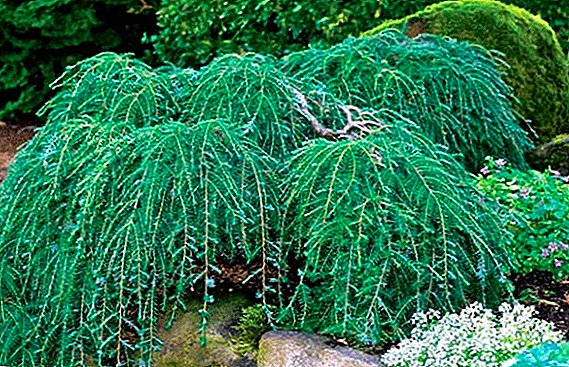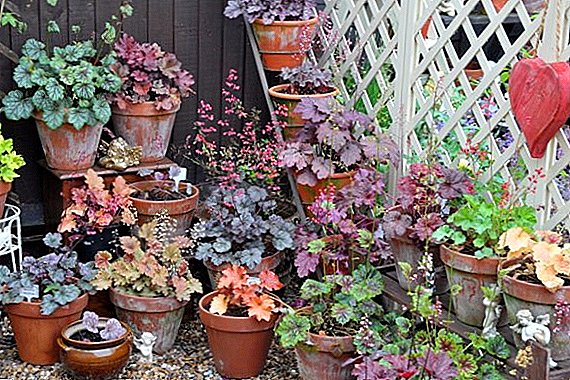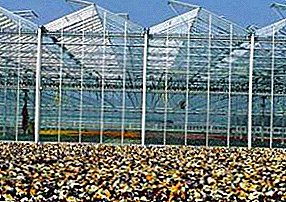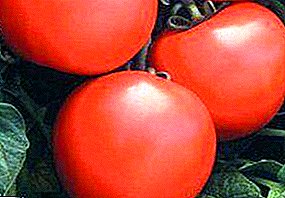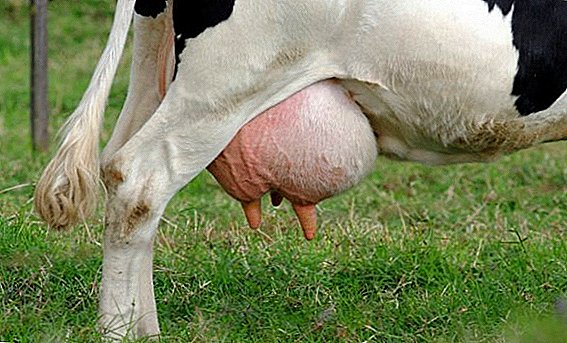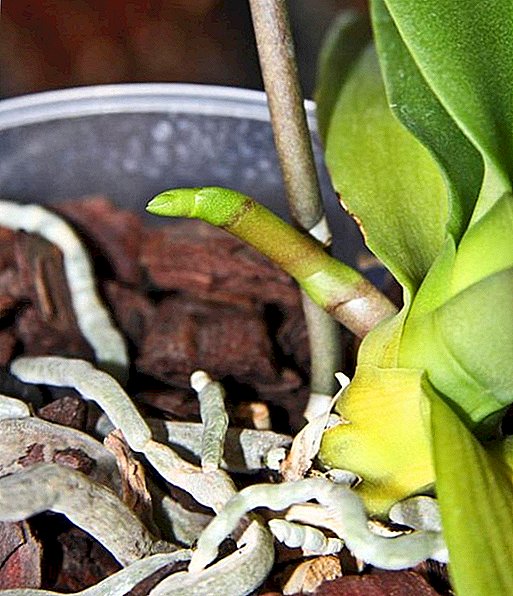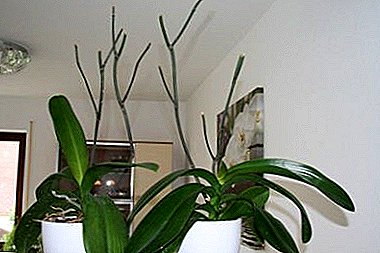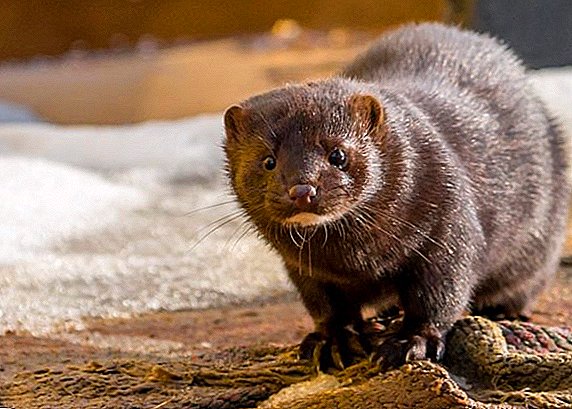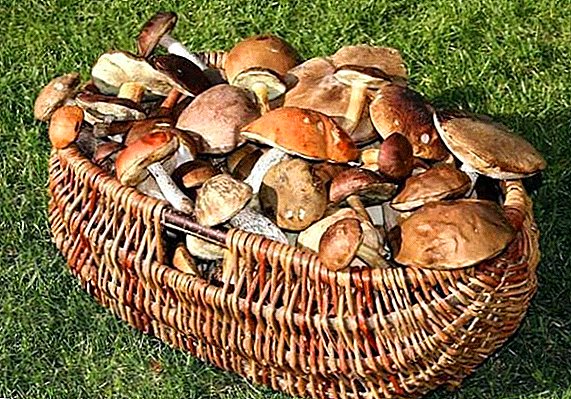 Mushrooms are a valuable food containing a wide range of vitamins, microelements and essential amino acids. In the Voronezh region, located in the forest-steppe zone, you can find up to 500 species of various mushrooms. But, possessing insufficient knowledge, it is easy to make a mistake and disrupt the "bad" specimen, than to cause great harm to the body. To avoid this, let's take a closer look at the mushrooms growing in this region.
Mushrooms are a valuable food containing a wide range of vitamins, microelements and essential amino acids. In the Voronezh region, located in the forest-steppe zone, you can find up to 500 species of various mushrooms. But, possessing insufficient knowledge, it is easy to make a mistake and disrupt the "bad" specimen, than to cause great harm to the body. To avoid this, let's take a closer look at the mushrooms growing in this region.
Edible and Conditionally Edible Mushrooms
About 200 species of edible mushrooms grow in the region. In addition to them, there are a number of conditionally edible, which can be eaten only after a thorough heat treatment. Let's look at the most popular types of edible and semi-edible mushrooms.
White mushroom

Familiarize yourself with the types and beneficial properties of porcini mushrooms, as well as learn how to prepare porcini mushrooms for the winter.
- Other name: Boletus, Boletus edulis.
- Hat: dark and light brown, brownish or baked milk, diameter up to 20 cm. The tubular cushion is light, later turns green and turns brown.
- Leg: strong, thick, dense, white, up to 5 cm in diameter. It happens with a beige or brown surface pattern.
- Pulp: dense, does not darken on a cut.
- Collection time: July - November.
- Habitat: deciduous forest, dark spruce, white moss among dry boron.
- Cooking: any way of processing.
Important! Planning to collect mushrooms, you should not rely only on theoretical knowledge. For the first time it is better to join the more experienced mushroom pickers, from whom you can learn all the features and subtleties of "quiet" hunting in this particular area. Do not risk your health, and if you suspect a poisoning, immediately seek medical help.

Veselka ordinary
- Other name: phallus immodest, morel smelly, Phallus impudicus.
- Fruit body: spherical or ovoid, light or pink-violet, up to 5 cm in size, the later-growing recipe breaks the body into several parts, and it remains at the bottom as a volvo.
- Recipe: elongated, spongy, hollow, usually slightly thicker towards the ends, height 10-23 cm, diameter 2-4 cm. At the top there is a spore gleb in the form of a conical-convex cellular cap 4-5 cm high and 2-4 cm in diameter, covered with a mucous greenish mass with the smell of rotten meat, at the top - a dense disk with a central hole.
- Collection time: June - October.
- Habitat: in wet forests and other landings.
- Cooking: fry in a spherical stage, after removing the mucus and shell.

Oyster mushroom
- Other name: oyster mushroom, Pleurotus ostreatus.
- Hat: characteristic ear-shaped form, curved down edges, color gray, below - light plates, diameter - up to 12 cm.
- Leg: dense, whitish, cylindrical, solid, with a diameter of 1-2 cm.
- Pulp: white, juicy, does not change at the cut, with a noticeable aroma.
- Collection time: March - April and October - November, it happens in winter.
- Habitat: deciduous and deciduous coniferous forests.
- Cooking: all methods of processing, the legs do not use.
We recommend to get acquainted with the methods of growing oyster mushrooms at home in bags, as well as methods of freezing and drying oyster mushrooms.

Oyster Horn
- Other name: Oyster mushroom abundant, Pleurotus cornucopiae.
- Hat: concave or funnel-shaped, wavy and fractured edges, cream or cream-brown color.
- Leg: eccentrically located, curved, thinner to the base, white or ocher shade.
- Pulp: whitish, fairly soft, mealy and pleasant aroma.
- Collection time: May - October.
- Habitat: mountain and floodplain deciduous forests, loves stumps and felled hornbeam, beech, elm, oak.
- Cooking: freshly prepared (cook, fry) and marinated.

Lovers of quiet hunting will be useful to read about how these edible mushrooms look like dung beetles, giant govorushka, common dubovik, boletus, volnushka, gadget, squeegee, rain coat, sandpiper, mokruha, meadow meadow, boletus, pig, earthy, white and yellow - brown row.
Pink wave
- Other name: Volzhanka, Volnyanka, Lactarius tormmosus.
- Hat: slightly pink with clear lighter concentric circles, edges - strongly tucked, shaggy, silky, diameter - up to 10 cm. Plates - the color of melted milk, pressing gives a light, sharp milky juice.
- Leg: pink, smooth, shiny, hollow, with a diameter of up to 2 cm and a height of 5-7 cm. When breaking along the circumference, a sharp milky sap appears.
- Pulp: dense, light, a lot of milky juice with a sharp taste.
- Collection time: end of August - September.
- Habitat: old coniferous forests with deep and wet litter of leaves and needles.
- Cooking: any processing method, but after pre-soaking.

Funnel talker
- Other name: Fragrant, Clitocybe gibba.
- Hat: brownish, sometimes yellow, funnel-shaped, diameter - 4-20 cm. Whitish or slightly yellow plates descend down the stem.
- Leg: light, slightly pubescent, trembling, diameter - up to 0.5 cm, thicker at the base.
- Pulp: fibrous, no pronounced taste.
- Collection time: the second half of the summer and to October.
- Habitat: coniferous-deciduous and coniferous forest, usually under beeches, hornbeams, pines, oaks.
- Cooking: good in salting and freshly cooked - boiled and fried.

Mouth black
- Other name: olive black, black, Lactarius necator.
- Hat: dark green, almost black, with lighter circles, diameter - up to 15 cm, edges wrapped down, mohrist. The plates are thin, frequent, yellow-green, descend along the leg.
- Leg: dense, hollow, dark green, diameter up to 2 cm.
- Pulp: dense, white hot milk appears on the cut and quickly becomes brownish-purple.
- Collection time: end of August - October.
- Habitat: all types of forests, like a thick fir grove.
- Cooking: fry, simmer, pickle, pickle, before this carefully scraping and soaking in water for a day.
Find out if you can eat black milk mushrooms, as well as how to distinguish a real mushroom from a false one.

Dubovik olive brown
- Other name: Dubovik ordinary, Subdue, Boletus luridus.
- Hat: round, smooth, fleshy, velvet, dark or olive-brown, eventually turning brown, turning blue at the place of pressure.
- Leg: yellowish-orange with a gray-brown pattern, expanding downwards, height - 7-15 cm, diameter - 2-6 cm.
- Pulp: yellowish, reddish at the base, turning blue at the break or cut, pleasant aroma.
- Collection time: July - September.
- Habitat: in the woods on the beams.
- Cooking: species conditionally edible, after 15 minutes of boiling can be fried, pickled; is dried.

Did you know? Plasmodium, or slezevik - one of the most unusual mushrooms in the world. He has the ability to walk at a speed of about one centimeter per hour! A slezovik can perfectly climb a tree trunk or the surface of a stump and get comfortable there.
Winter mushroom
- Other name: winter honeycomb, Flammulina velutipes.
- Hat: flat, shiny, slimy, yellow-brown, darker to the center, diameter - 2-8 cm. Rare yellow or cream plates grow to the leg.
- Leg: dark, velvety, slightly lighter under the cap, diameter - 0.5-0.7 cm and height - 3-10 cm.
- Pulp: watery, yellowish, pleasant mushroom flavor.
- Collection time: one of the latest, appears at the end of autumn before frost.
- Habitat: on fresh, decayed stumps of deciduous trees.
- Cooking: boil, fry, salt, pickle.

Chestnut mushroom
- Other name: chestnut tree, Gyroporus castaneus.
- Hat: semicircular, later flat, sometimes with a curved edge, thick, fleshy, dry, velvety, chestnut or brown-brown, diameter 4-9 cm.
- Leg: hollow, slightly velvety, hat-colored or lighter, height - 4-6 cm and diameter - 1-2.5 cm.
- Pulp: dense, light, pleasant fruit aroma.
- Collection time: July - October.
- Habitat: deciduous-coniferous and deciduous forests, oak-pine plantings.
- Cooking: pickles, roasts, soups; is dried.

Chanterelle real
- Other name: Chanterelle, Cantharellus cibarius.
- Hat: convex, later funnel-shaped, wavy edge, yellowish or ocher, diameter - up to 6 cm. The plates - rare, descend far along the stem.
- Leg: smooth, narrowed at the bottom, the color of the cap.
- Pulp: dense, elastic, whitish, fleshy.
- Collection time: all summer, waves appear even in dry time.
- Habitat: coniferous and mixed forests
- Cooking: fried fresh, frozen for future use, salted.
It will be useful for you to read about where chanterelles grow and how not to get false mushrooms, how useful they are, and how to freeze and marinate chanterelles at home.

May mushroom
- Other name: May row, Calocybe gambosa.
- Hat: light, convex, later prostrate, creamy with wavy edges, cracking, diameter - up to 10 cm. The plates are whitish or creamy, frequent, adherent to the leg.
- Leg: dense, fibrous, yellowish or cream, diameter - up to 3 cm.
- Pulp: thick, whitish, dense.
- Collection time: May June.
- Habitat: bright forest, open spaces in housing, barns and farms.
- Cooking: soups and roast, in the billet for the winter does not go.

Granular oiler
- Other name: Early butterdish, Suillus granulatus.
- Hat: roundish, convex or flattened, slimy, yellowish or reddish-brown, reddish-brown in color, up to 8 cm in diameter.
- Leg: light, flattened, fairly dense, no ring, diameter - 1-2 cm.
- Pulp: thick, whitish or slightly yellowish.
- Collection time: mid-June - October, collected early in the morning, because for dinner they are already wormy.
- Habitat: coniferous and mixed forests, often dry oak forests.
- Cooking: one of the most delicious and versatile mushrooms.

Moss Fissured
- Other name: Mohovikov red, Xerocomus chrysenteron.
- Hat: convex, rounded, spread with age, thick, fleshy, ocher-olive, orangish to brown, mottled, velvety, later naked, dry and dull, diameter - 3-10 cm
- Leg: dense, curved, yellow or brownish, red below, it happens with red fibers, height - 3-6 cm and diameter - 1-2 cm.
- Pulp: light, purple under the skin, a faint pleasant aroma, slowly turning blue on the cut or break.
- Collection time: June - September
- Habitat: everywhere, in pine forests, oak and poplar forests, willow thickets.
- Cooking: cook, fry, pickle.

Did you know? Among the mushrooms there are real predators, and the oldest of them was found in a fragment of amber, which is about 100 million years old. By the way, not so long ago there were many nematodes in the mines of Kyrgyzstan - dangerous parasites that transmit infections. Experts have scattered the mines of spores of predatory fungi that eat nematodes, and today almost forgot about the problem.
Meadow meadow
- Other name: meadow plant, meadow grass, Marasmius oreades.
- Hat: Yellow-brown or ocher-brown, initially convex, later in the form of an umbrella with a white patina, uneven edges, diameter - up to 4-5 cm. Cream plates.
- Leg: slightly yellowish, thin, elastic, easily broken.
- Pulp: watery, pale, pleasant almond aroma.
- Collection time: from May - June until the end of the summer.
- Habitat: pastures, fields, along trampled paths.
- Cooking: cook, fry, pickle, dry; spicy taste, legs do not use.

Mushrooms will be interesting to read about which mushrooms are edible and poisonous, which edible mushrooms grow in the fall and in May, as well as learn how to check the mushrooms for edibility by popular means.
Autumn honeycomb
- Other name: real honeycomb, Armillaria mellea.
- Hat: convex, color - from sandy to brown with darker middle and light scales, diameter - up to 8 cm. With age - prostrate, brown-brown, without scales.
- Leg: thin, elastic, with a ring, lighter than the cap, dark at the base of the fused colony.
- Pulp: dense, fibrous, whitish, pleasant mushroom aroma and taste.
- Collection time: from late August to October frosts.
- Habitat: on the stumps of various tree species, especially on birch.
- Cooking: cook, fry, pickle, salt; legs do not use.

Boletus
- Other name: about black, Leccinum scabrum.
- Hat: hemispherical, slightly gray, with a pattern, up to 12 cm in diameter, with a white-cream undercoat.
- Leg: dense, whitish, with dark scales, lighter below, diameter - up to 10 cm.
- Pulp: dense, whitish, spongy underfur, turns gray with age.
- Collection time: May - October.
- Habitat: forests with the presence of birch.
- Cooking: good in hot, marinade, soups; is dried.

Aspen Oakwood
- Other name: red-headed oak, common oak, Leccinum quercinum.
- Hat: in the form of a hemisphere, brownish or orangish, diameter - 6-16 cm.
- Leg: slightly thicker at the base, brown or brown, often with scales, height - 8-15 cm.
- Pulp: very dense, whitish with gray or brownish spots, blackens on scrapping or cutting.
- Collection time: Aug. Sept.
- Habitat: forests with the presence of oaks.
- Use: any way of processing.
Familiarize yourself with the typical representatives of an aspen species, as well as learn how to identify a false boletus.

Morel present
- Other name: morel, morchella esculenta.
- Hat: ovoid, brown or brown, cellular, diameter - 5-6 cm, the edges merge with the stem.
- Leg: fragile, short, hollow, lighter than the cap, diameter - 2-3 cm.
- Pulp: light, fragile, mushroom aroma, sweetish taste.
- Collection time: starting from the end of April - the beginning of May.
- Habitat: on the edges of wet lowlands, on old logging and rotting stumps.
- Cooking: cook fresh, boil well, has a pronounced mushroom flavor.
We advise you to read about where they grow and how to cook edible morels, as well as the difference between morel mushrooms and a line.

Morel cap
- Other name: Morel gentle, Verpa bohemica.
- Hat: wrinkled, velvety, brown, up to 3 cm in diameter, sits freely on the leg, the edges do not join with the leg.
- Leg: white with small brownish grains, hollow, extended towards the base, high, up to 15 cm.
- Pulp: thin, fragile, waxy, with a recognizable smell of dampness.
- Collection time: April May.
- Habitat: among the bushes, glades and edges of aspen, birch and poplar forests.
- Cooking: view conditionally edible, use freshly prepared after pre-boiling 10-15 minutes (pour the broth!).

Pine red
- Other name: Lactarius deliciosus.
- Hat: convex or funnel-shaped, reddish-pink with darker circles, 5-15 cm in diameter.
- Leg: hollow, narrowing to the base, superficial fossa.
- Pulp: dense, yellow-orange, on a cut quickly turns green.
- Collection time: Midsummer - the end of autumn.
- Habitat: spruce and mixed forests, dry forest.
- Cooking: freshly prepared - cook, fry; good at salting.

Champignon ordinary
- Other name: Pepperica, Agaricus campestris.
- Hat: white, comes with brown scales, convex, later - in the form of an umbrella, diameter - up to 15 cm. Plates - white, wide, frequent, later turn brown.
- Leg: hollow, in the middle with a delicate white ring, up to 10 cm in height, up to 2 cm in diameter.
- Pulp: whitish, pinking, pleasantly smelling.
- Collection time: May - October.
- Habitat: meadows, meadows, parks, gardens, groves, squares.
- Cooking: good in hot, marinade, soups; is dried.
Find out what useful properties champignons have, how to clean champignons correctly, and also get acquainted with the technology of champignon cultivation at home.

Important! Mushrooms should not be used by women during pregnancy and lactation, as well as young children. Even good edible mushrooms can be too heavy for them and cause digestive problems.
Inedible, poisonous mushrooms
In addition to edible and conditionally edible mushrooms, inedible and poisonous species are found in the Voronezh Region. Inedible are those mushrooms that, while not being poisonous, for some reason are not used for food. This may be due to their taste, smell or hard structure.
Toxic are those mushrooms, the use of which in food causes poisoning. With these types of mushrooms one should be most careful and, in order to avoid a fatal mistake, one must learn well to distinguish them from similar edible species.
Death cap
- Other name: Amanita green, white amanita, Amanita phalloides.
- Hat: first bell-shaped, later with an umbrella, white or greenish, sometimes grayish. Frequent and white plates.
- Leg: with a white vagina, lower tuberous thickening, height - up to 10 cm, a white ribbed ring hanging down the sides.
- Pulp: whitish, delicate, pleasant aroma.
- Ripening time: July - October.
- Habitat: deciduous and coniferous-deciduous forests, likes to settle under oaks, birches, lindens.

Valui false
- Other name: Crowded hebeloma, horseradish mushroom, Hebeloma crustuliniforme.
- Hat: strong, convex, later cracks, light brown with yellow, darker center, diameter - up to 10 cm. Wide, large, brownish plates with dark spots.
- Leg: strong, hollow, whitish or cream, happens with a layer of light scales, up to 7 cm long, the milky juice does not stand out.
- Pulp: whitish with a creamy tinge, bitter taste, sharp smell of horseradish or rotten radish.
- Ripening time: August - October.
- Habitat: open forest edges, forest paths.

Fiber Patuiara
- Other name: fibrin blushing, Inocybe patouillardii.
- Hat: cap-shaped, later in the form of an umbrella with a central tubercle, the straw color turns reddish over time.The plates are white, frequent, grown, brownish with age.
- Leg: yellowish, slightly swollen at the base, diameter - 0.5-1 cm, height - up to 7-8 cm.
- Pulp: sharp unpleasant fuzzy smell.
- Ripening time: autumn.
- Habitat: deciduous and mixed planting.

Govorushka waxed
- Other name: Govorushka grayish, Clitocybe cerussata.
- Hat: white, convex, later concave, with a turned edge, there is a central tubercle and concentric circles, diameter - up to 10 cm. Narrow, cream, yellowing plates.
- Leg: whitish, fibrous, with a soft sticky fuzz, the base is thickened, height - 2-4 cm, diameter - up to 1.5 cm.
- Pulp: light, does not produce milky juice.
- Ripening time: summer autumn.
- Habitat: coniferous and mixed forests, open forest glades.

Bleached govorushka
- Other name: bleached talker, striated goat talker, Clitocybe dealbata.
- Hat: convex, tucked edge, later prostrate, then flat or concave, often with a wavy edge, white or grayish, in mature - buffy, mealy patina, diameter - 2-6 cm.
- Leg: white or grayish, partially in nut spots, solid, later - hollow, darkens when pressed.
- Pulp: elastic, fibrous, thin, mealy, whitish, with a powdery aroma and inexpressive taste.
- Ripening time: mid July - November.
- Habitat: deciduous and mixed forests, forests, pastures, meadows, parks.

Red-leaf bastard
- Other name: Sulfur-yellow honeycomb, Hypholoma fasciculare.
- Hat: prostrate, yellow-brown, yellow-gray, darker in the center, diameter - 2-5 cm. The plates are frequent, grown, yellow-gray or olive, darkening to brown.
- Leg: thin, hollow, yellow, height - up to 10 cm, diameter - up to 0.5 cm.
- Pulp: yellowish, sharp, bitter, taste disappears when boiled.
- Ripening time: September - November.
- Habitat: on decaying wood of coniferous and deciduous trees.
Did you know? Japanese shiitake mushroom is the most popular in the world, and its valuable properties are actively used in cosmetology. Deeply penetrating the skin, the mushroom extract nourishes the skin and improves cell regeneration. So, in 2002, Yves Rocher released a special anti-aging line based on shiitake mushroom extracts - "Serum Vegetal de Shiitake ".

Amanita Panther
- Other name: Amanita gray, Amanita pantherina.
- Hat: bell-shaped with central tubercle, with time becoming flatter, gray-brown or olive-brown with concentric white pimples. The plates are white, free.
- Leg: thin, hollow, white, tuberiformly swollen below, with a vagina, surrounded by a clear rim, 6–12 cm high, up to 1.5 cm thick. A white, thin ring that disappears from older specimens.
- Pulp: whitish, the smell is unpleasant, does not blush on a break.
- Ripening time: July - October.
- Habitat: mixed, coniferous, birch forests, in dry forests and along the edges of marshes.

We recommend reading about the danger of a panther mushroom, how different types of amanitas look, and what useful properties amanita have.
Spiderweb plush
- Other name: Mountain Spider Web, Orange Red Spider Web, Cortinarius orellanus.
- Hat: hemispherical, later flat, small tubercle in the center, dry, dull with small scales, orange or brown-reddish, diameter - 3-8.5 cm.
- Leg: slender, not thickened, fibrous, light yellow.
- Pulp: yellowish, not strong smell of a radish.
- Ripening time: midsummer - autumn.
- Habitat: deciduous forests, rarely coniferous.

Thin pig
- Other name: pig, cowshed, Paxillus influenut.
- Hat: funnel-shaped, velvety, terry on the edge, beige or yellowish, diameter - 6-12 cm. Plates - light with ocher, on the cut and under pressure darken.
- Leg: dense, colored caps, height - up to 8 cm, diameter - up to 1.5 cm.
- Ripening time: June - October.
- Habitat: coniferous and mixed forests, young birch, oak and shrubs, along ravines, on forest edges.

Stinging cereals
- Other name: russula caustic, Russula emetica.
- Hat: shiny, convex, prostrated with age, later depressed and bumpy, ribbed edges, with moisture - sticky, from pinkish to bright red with light or ocher spots, diameter - 5-9 cm.
- Leg: dense, strong, with fine wrinkles, white, later turns yellow.
- Pulp: spongy, damp, slight fruit aroma, pepper flavor, later turning pink or red.
- Ripening time: July - October.
- Habitat: wet deciduous and coniferous forests, peatlands, marshlands.

Spring entrophe
- Other name: Spring Rose Plate, Entoloma vernum.
- Hat: half-prostrate, in the form of a cone, often with a central tubercle, from gray-brown to almost black with olive, diameter - 2-5 cm.
- Leg: fibrous, cap-colored and lighter, thicker on the base, length - 3-8 cm.
- Pulp: light, with no obvious taste or smell.
- Ripening time: May June.
- Habitat: deciduous forest, rarely - coniferous forests.

Ginger red mushroom
- Other name: yellow-skinned piperica, Agaricus xanthodermus.
- Hat: rounded, ovate, silky, white, finely flaked. The plates are thin, white or bright pink, later darkening to brown.
- Leg: slightly swollen at the base, with a double ring and scales at the bottom, on the cut at the base it becomes bright yellow, height - 6-10 cm, diameter - 1-2 cm.
- Pulp: white, quickly turning yellow when cut and with pressure, strong unpleasant smell of carbolic acid.
- Ripening time: July - October.
- Habitat: deciduous and mixed forests, meadows.

Mushroom spots in the Voronezh region
Experienced mushroom pickers recommend the following places:
- a large number of mushrooms is found in McLock;
- in Malyshevo grows a lot of boletus and aspen;
- from Soldatsky, you can bring a good crop of white mushrooms, aspen mushrooms, aspen mushrooms, Polish mushrooms;
- Nelzha - a great place, featuring a large variety of mushrooms.
At the same time, there are places where poisonous mushrooms are found in large quantities:
- the neighborhood of the village of Somovo;
- the territory of the sports complex "Olympic";
- area of the hotel "Sputnik";
- neighborhood villages Yamnoe, Podgornoye and Medovka;
- the territory of the Militia School and the village of Shady;
- forest planting in the Soviet area.

So, going for mushrooms, remember that it is worth collecting them in ecologically clean areas, far from large cities, enterprises and highways. Take only young, fresh and well-known mushrooms. And always use the rule: not sure - throw it away. Successful and safe hunting for you!


